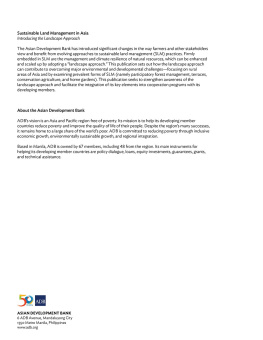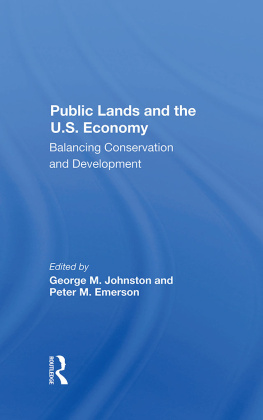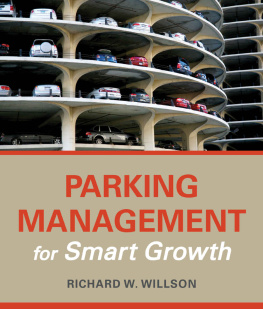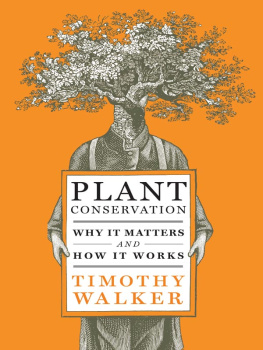GROWTH MANAGEMENT AND PUBLIC LAND ACQUISITION
Growth Management and Public Land Acquisition
Balancing Conservation and Development
Edited by
TIMOTHY S. CHAPIN AND CHRISTOPHER COUTTS
Florida State University, USA
First published 2011 by Ashgate Publishing
Published 2016 by Routledge
2 Park Square, Milton Park, Abingdon, Oxon OX14 4RN
711 Third Avenue, New York, NY 10017, USA
Routledge is an imprint of the Taylor & Francis Group, an informa business
Copyright Timothy S. Chapin and Christopher Coutts 2011
Timothy S. Chapin and Christopher Coutts have asserted their right under the Copyright, Designs and Patents Act, 1988, to be identified as the editors of this work.
All rights reserved. No part of this book may be reprinted or reproduced or utilised in any form or by any electronic, mechanical, or other means, now known or hereafter invented, including photocopying and recording, or in any information storage or retrieval system, without permission in writing from the publishers.
Notice:
Product or corporate names may be trademarks or registered trademarks, and are used only for identification and explanation without intent to infringe.
British Library Cataloguing in Publication Data
Growth management and public land acquisition : balancing conservation and development. -- (Urban planning and environment)
1. Real estate development--Environmental aspects--United States. 2. Real estate development--Environmental aspects-United States--Case studies. 3. Cities and towns--Growth--Environmental aspects--United States. 4. Cities and towns--Growth--Environmental aspects-- United States--Case studies. 5. Public lands--United States--Management. 6. Public lands--United States-- Management--Case studies.
I. Series II. Chapin, Timothy Stewart. III. Coutts, Christopher.
333.7'315'0973-dc22
Library of Congress Cataloging-in-Publication Data
Chapin, Timothy Stewart.
Growth management and public land acquisition : balancing conservation and development / by Timothy S. Chapin and Christopher Coutts.
p. cm. -- (Urban planning and environment)
Includes index.
ISBN 978-0-7546-7941-7 (hardback) -- ISBN 978-1-3155-8598-7 (ebook)
1. Public lands--United States. 2. Natural areas--United States. 3. Sustainable development--United States. I. Coutts, Christopher. II. Title.
HD216.C43 2011
333.1'1--dc22
2010046576
ISBN 9780754679417 (hbk)
ISBN 9781315585987 (ebk)
ISBN 9781317124382 (ebk-ePUB)
Contents
Timothy S. Chapin and Christopher Coutts
Tom Daniels and Mark Lapping
Tom Daniels
Andrew H. McLeod
Timothy S. Chapin and Harrison Higgins
Yan Song
Christopher Coutts
SeJin Lee and Richard C. Feiock
Timothy S. Chapin
Karen Palm Szobota and Lori Lynch
W. David Clutter
Timothy S. Chapin and Christopher Coutts
List of Figures
List of Tables
Acknowledgments
In January 2008 a symposium entitled Achieving Growth Management through Public Open Space Acquisition: Realities and Prospects was held on the campus of Florida State University in Tallahassee, Florida. At this symposium we brought together leading conservation and growth management scholars, planning practitioners, and conservation advocates to discuss the role that land acquisition might play in promoting growth management efforts in Florida (and elsewhere). The original intent of the event was deceptively simple: to evaluate the role that the Florida Forever land acquisitions have had in promoting the states growth management goals. We had hoped that this event might help in the push to have Florida Forever expanded in the coming decades as Florida deals with its ongoing developmentpreservation struggle.
However, as the event progressed it became clear to all involved that public policy in the areas of growth management and land acquisition is often shaped by what we think is effective policy, rather than what we know to be effective policy. Our discussions during the event led the participants to conclude that there is much to be learned about the opportunities and challenges faced by planners and policymakers at the nexus of growth management and land conservation. While there clearly are strong connections between the two initiatives, little empirical investigation has been undertaken at this nexus. Ultimately, this recognition of our wide gap in knowledge and the general quality of the presentations at the symposium led us to pursue this edited volume.
It is worth noting that this symposium was yet another in a long line of events sponsored by the DeVoe Moore Center for the Study of Critical Issues in Economic Policy and Government at Florida State University (http://www.coss.fsu.edu/dmc/). The mission of the DeVoe Moore Center is to increase knowledge and public understanding about the role of government in a market economy and to study how government rules, regulations, and programs affect the economy. The Center has been a great resource for faculty in the Department of Urban and Regional Planning, the institutional home of the editors, and for the state of Florida as it wrestles with the many problems associated with its usually fast growing economy. We greatly appreciate the financial support from the DeVoe Moore Center, spearheaded by Center Director Keith Ihlanfeldt, and also thank Keith for his suggestions that we market the event to both scholarly and practitioner audiences.
An edited volume like this one cannot proceed without effort from a great number of people whose names are not attached to chapters in the book. Most notably, Kathy Makinen of the DeVoe Moore Center provided outstanding copyediting services for the book. Every chapter in this volume is better because of her excellent work and her suggestions for simpler and more direct language. We also thank the wonderful staff at Ashgate Publishing for their help in seeing us through the publication process.
Lastly, we offer thanks to the many planners and environmental advocates that contributed indirectly to this volume. A great many individuals took time to answer questions from the various chapter authors, provided input via interviews or surveys, or read and commented on paper drafts. The book is far better for their input.
List of Contributors
The Editors
Timothy S. Chapin is Associate Professor and Chair of the Department of Urban and Regional Planning at Florida State University. Dr. Chapins research interests are in the areas of growth management/comprehensive planning and downtown redevelopment. He was lead editor and chief contributor to Growth Management in Florida: Planning for Paradise (Ashgate Publishing), a book that evaluates the effectiveness of the states 1985 Growth Management Act. Chapins work has been supported by the Century Commission for a Sustainable Florida, the Lincoln Institute for Land Policy, and the Department of Housing and Urban Development. He earned a PhD in urban design and planning from the University of Washington.
Christopher Coutts is an Assistant Professor in the Department of Urban and Regional Planning and a Research Associate in the Center for Demography and Population Health at Florida State University. His research focuses on the influence of the built environment and ecologically-sensitive land use practices on community health and health behavior. His Peace Corps work in Malawi is what spurred his ongoing investigation of the fundamental role of the environment on health. He earned a graduate degree in Public Health from New Mexico State University and a Ph.D. in Urban, Technological, and Environmental Planning from the University of Michigan.













